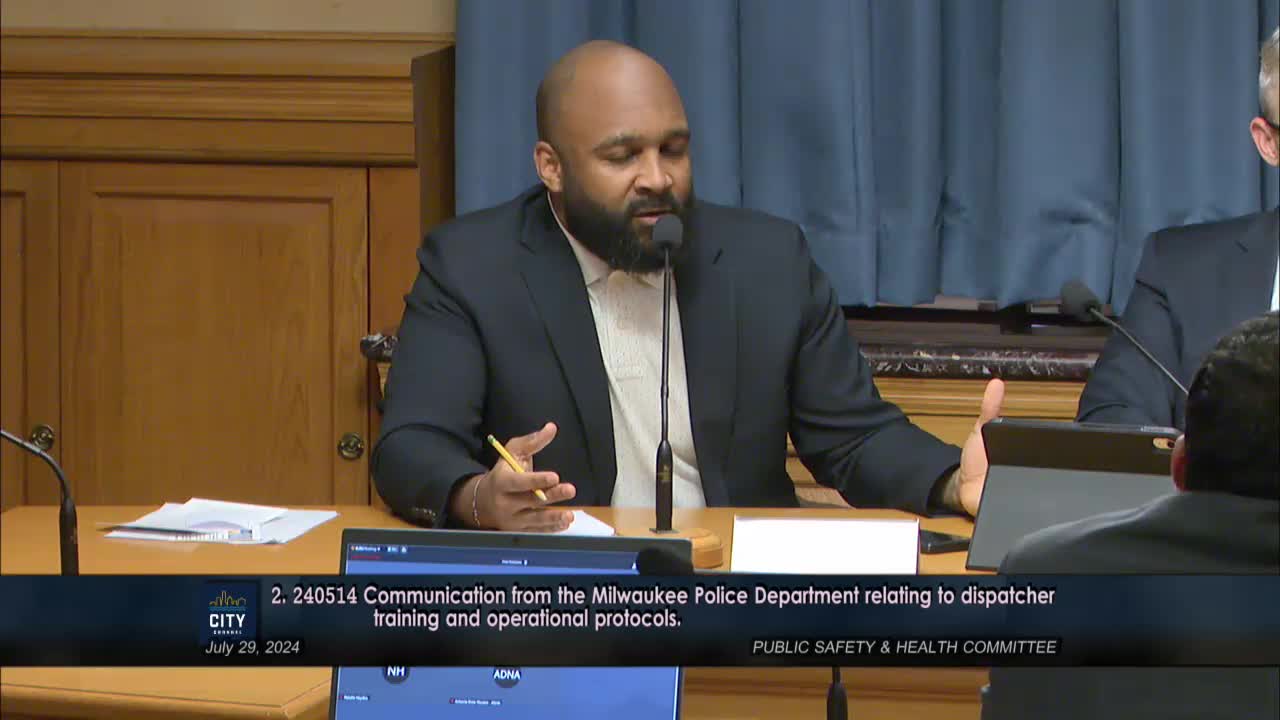Dispatch Policy Under Fire in Heated City Council Debate
July 29, 2024 | Milwaukee , Milwaukee County, Wisconsin

This article was created by AI summarizing key points discussed. AI makes mistakes, so for full details and context, please refer to the video of the full meeting. Please report any errors so we can fix them. Report an error »

During a recent government meeting, officials engaged in a heated discussion regarding the protocols for handling emergency calls, particularly in situations where individuals are instructed to call back after arriving at a specific location. The dialogue highlighted concerns about the effectiveness and safety of current dispatch practices.
Alderman raised questions about the rationale behind requiring callers to return home before contacting dispatch again, emphasizing the potential risks involved if a caller encounters issues, such as a dead phone or unforeseen delays. The alderman expressed frustration over the lack of clarity in communication from dispatch, questioning why callers are not informed of the need to call back once they reach their destination.
Chief Sarno responded by explaining that the standard practice is to have callers reach out when they are physically at the location where assistance is needed. He acknowledged the potential for missed connections if callers are not at the designated spot when help arrives. This exchange underscored the need for clear guidelines and communication to ensure public safety.
The discussion also touched on the department's policy regarding responses to motor vehicle accidents, particularly those resulting in property damage. It was noted that while squads generally do not respond to such incidents, exceptions exist, such as in hit-and-run cases. The ambiguity surrounding the term \"generally\" in the policy raised further questions among officials, prompting a commitment to distribute the written policy for clarity.
Director Todd emphasized the importance of reviewing citizen complaints comprehensively, identifying potential issues in the dispatch process. The meeting concluded with a consensus on the need for improved communication protocols and clearer policies to enhance the efficiency and safety of emergency response efforts.
Alderman raised questions about the rationale behind requiring callers to return home before contacting dispatch again, emphasizing the potential risks involved if a caller encounters issues, such as a dead phone or unforeseen delays. The alderman expressed frustration over the lack of clarity in communication from dispatch, questioning why callers are not informed of the need to call back once they reach their destination.
Chief Sarno responded by explaining that the standard practice is to have callers reach out when they are physically at the location where assistance is needed. He acknowledged the potential for missed connections if callers are not at the designated spot when help arrives. This exchange underscored the need for clear guidelines and communication to ensure public safety.
The discussion also touched on the department's policy regarding responses to motor vehicle accidents, particularly those resulting in property damage. It was noted that while squads generally do not respond to such incidents, exceptions exist, such as in hit-and-run cases. The ambiguity surrounding the term \"generally\" in the policy raised further questions among officials, prompting a commitment to distribute the written policy for clarity.
Director Todd emphasized the importance of reviewing citizen complaints comprehensively, identifying potential issues in the dispatch process. The meeting concluded with a consensus on the need for improved communication protocols and clearer policies to enhance the efficiency and safety of emergency response efforts.
View full meeting
This article is based on a recent meeting—watch the full video and explore the complete transcript for deeper insights into the discussion.
View full meeting
